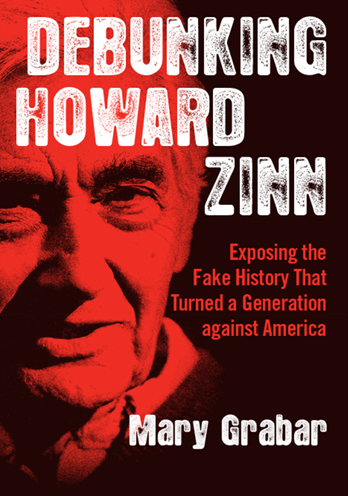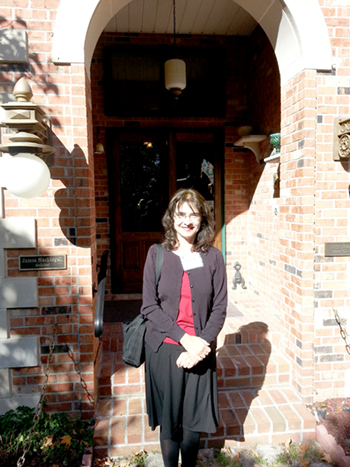 What Happens When Law Schools Embrace Critical Race Theory? by Matthew Andersson, guest columnist (posted by Mary Grabar, June 9, 2021)
What Happens When Law Schools Embrace Critical Race Theory? by Matthew Andersson, guest columnist (posted by Mary Grabar, June 9, 2021)
“The Equal Protection Clause affirmed that the Constitution protected the situations of individuals, not groups. It is [otherwise] not a matter of unconstitutional subordination of one group to another, but of offensive segmentation by race. A whole elite cadre depends on racial division for its constituency and its position. Justices Powell and Marshall agreed that a single, unsegmented nation, where race did not matter, was the goal. But if we continue to divide ourselves by race, to make race dispositive in all sorts of contexts, with the ugly necessity of formally assigning individuals to particular racial groups, then the time will soon come when this new racial segmentation will become permanent, that the ideal of each person’s being judged as an individual and not as a member of a group to which he is assigned by somebody’s “public policy” will no longer be possible. Fifty years is long enough to make dividing us up by race a habit, to create a practically and politically unshakable sense of entitlement in those who think they benefit from such schemes, and in the racial entrepreneurs who know they do. It may be that the only way to get beyond racism is to just stop using race in a [reasonably short period]. Only with such a determinative end point will institutions have the incentive to confront the political pressure arrayed against a truly unitary concept of citizenship.” Charles Fried, Harvard Law Beneficial Professor, former Associate Justice Supreme Judicial Court Massachusetts and Solicitor General of the United States, in Saying What the Law Is: The Constitution in the Supreme Court (2006) 239-240
“Law has two historic purposes: the protection of liberty and the preservation of order. It is time to add to those a third: the maintenance of one America. This is not a call for homogeneity or hollow patriotism. It is rather a plea for a legal framework within which the dynamics of diversity can be put to their most productive use. [L]aw can help us to acknowledge and appreciate all we have in common. Or it can drive us irretrievably apart. Some may question why a sense of national unity is so necessary. It is not simply that national identification helps America present a stronger front against its global adversaries. It is not just that national allegiance helps to overcome the impulse of racial and ethnic separatism. What truly matters is that the great national goals of strength, prosperity, freedom and humanity become impossible without the capacity to summon some sense of America itself. J. Harvey Wilkinson III, former chief judge of the U.S. Court of Appeals for the Fourth Circuit, Toward One America: A Vision in Law, NYU James Madison Lectures, October 2, 2007, and in 83 N.Y.U. L. Review 323 (2008)
It is generally assumed that CRT or “critical race theory,” is an initiative forced into our nation’s secondary schools, undergraduate college curricula, corporations, and even the military. But it is also becoming embedded in our nation’s graduate professional schools, especially in law and public policy. Once installed there, it expands and develops in very different ways.
It is in the graduate professional schools that “CRT” grows its legs in abstract, formal models, and in legal doctrine and legislative proposals. These then permeate out into larger state and commercial institutions. Graduate students, indoctrinated and armed with formalized tools, become “officers” of the CRT army, and are absorbed and operationalized by schools, companies and government. Ensconced in teaching or administrative positions, they reinforce and consolidate CRT ideology.
But there is no such thing as “critical race theory.” There are special interests organized around the “CRT” marketing program. There is nothing specifically critical about it; nor is it actually centered in race; and it has little if any characteristics of a theory.
A Pleading Tool: CRT, along with BLM, is a pleading tool: a position taken up by an organized—or more accurately by an incited—coalition of individuals and institutions opportunistically advancing a synthetic complaint in the public forum, especially through media, universities, and government organizations. These are needed to create the impression that their argument has an historical basis and possesses moral weight. The sufficiently articulated demands can be seen as a path to both social and legal relief through remedies of financial damages and restitution, and through policy that codifies its demands and interests-- despite any constitutional violations. In a word, it is a form of ransomware, formatted through “lawfare.’ In judicial terms, it is a “strike suite,” or a fabricated lawsuit used to extort payment from a defendant where the costs of litigation exceed settlement. CRT is not only embedded in professional schools, but the CRT construct itself, in some important ways, was incubated in graduate law school culture itself, as a convenient “handle” or tool extending from broader, more abstract schools of legal theory. As explained recently in Chronicle of Higher Education:
“Critical race theory is an outgrowth of critical legal studies [CLS], itself a development in the tradition of American legal realism, the sociologically inflected school of legal history and theory with roots in Oliver Wendell Holmes Jr.'s 1881 The Common Law. Legal realism, as consolidated in the 1930s, treated legal outcomes, especially judges' rulings, as conditioned by all the biases, prejudices, power relations, and even unconscious motivations undergirding the broader society. Its tendency was demystifying and disillusioning. Critical race theory began in the 1970s when scholars like Derrick Bell used the tools of legal realism to focus specifically on the consequences of racism in American law.”
By this account, CRT has a long precedent in law school philosophies developed by so-called legal reconstructionists who interpreted the legal mission in activist terms, and increasingly, in coercive moralistic ones. But a movement, cause, interest or school of such philosophy requires a transforming mechanism in order to turn it into a structured program, or an active, organized, and especially, financed institutional operation. One such transformational event occurred at the University of Chicago Law school through the 10-year incubation of Barack Obama as a lecturer in law and race. He then took his larger “business plan” resting on community organizing (that is, on agitating) and coupled with the network and assets of legal and educational institutionalism, imported it into the state and federal government apparatus, with support from a syndication of like-minded ideologues who saw broad political opportunity, careerism and fund-raising means inherently residing in it, especially its powerful shaming and extortion qualities. CRT has the cultural “DNA” of organized crime, and especially, gang warfare methods.
What are the effects left on law school culture?
There are three. First, law schools are further diverted from their legitimate, and necessarily circumscribed educational charter, which is to organize and transmit a focused set of core legal subjects. In American law schools these are limited to just 7 legitimate subjects for a “QLD” or qualifying law degree: contracts, property, torts (some form of asserted wrong), civil procedure (or pleadings and the use of the judicial or court system), and the “3Cs” or constitutional, criminal, and corporate law. Within these subjects are included evidence, legal theory, administrative law, and some (but not enough) history. Aside from good writing and rhetoric skills, that’s the essence of law school.
Second, CRT (and its ideological predecessor, CLS, or “Critical Legal Studies”) turns legitimate legal advocacy into a larger social justice framework. For example, rather than using the law for individual protection and individual advocacy, the CRT model expands outward to encompass an entire category (hence “race” versus “person”) and re-casts that category as inherently victimized, even if no harm, injury, or prejudice is identifiable: it turns legal evidence standards upside down by asserting that a wrong has occurred ipso facto-with no proof, or even due process necessary. American law, however, is already rich in protections and opportunities for those provably disadvantaged. They include not only the full panoply of the Constitution, and decades of constitutional law, but legislation, statutes, and Acts that provide a full legal took kit to any individual or group who may seek to advance or advocate for their rights, or even interests, if they are actually suffering an injustice. They run the full gamut of public and private law: there is not one corner of American life where discrimination can legally flourish But to BLM and the CRT coalition, that isn’t good enough: reinforcing or ratifying legal rights are not the object: revenge, victimization, equity, and “justice” are. But what, exactly, does justice mean? Normally it refers to equitable treatment, or the prevailing of truth that is pursued under contentions over present injury and an actual injustice. Even these objectives are not sufficient to the CRT network: as they demonstrated over the Summer of 2020, and into 2021, they want blood. They seek to destroy, upend, topple, re-define and most of all, re-structure power through law activism--practiced, honed and indoctrinated through law school.
It also rests on collective solidarity aimed at collective blame in opposition to our actual laws which require individual responsibility, autonomy, and knowledge. To the Left, however, there are not positive or even desirable qualities or attributes: its human subjects need authority, direction, rules, and control (hence the fantastic power of Covidianism As Anthony Fauci. explained recently to Emory University graduates, systemic racism itself is a causal factor in Covid virus development).
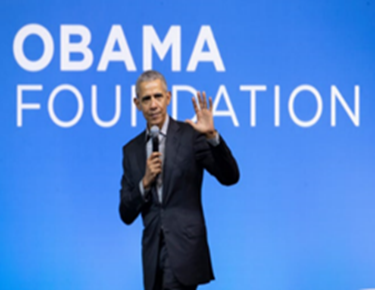 For the CLS/CRT interests entrenched in our nation’s law schools, this is also, perhaps most centrally of all, good business. While more traditional upper middle class and privileged law school attendees increasingly dwindle, more recruits must be attracted, or fabricated out of what raw material is available, even if that means stimulating them and “baiting” them with programmatic pretext in the form of rehearsed racial violence, sensationalized shootings, funded riots (for example, by the Obama Foundation) or dramatized police procedures (much of the diversity ideology rests on a flawed legal response to amicus briefs, by former Supreme Justice O’Conner concerning a law school mandate of diversity as national security). Law schools then hold out to new recruits that they can “change the world” and lead the charge is righting societies’ wrongs—as long as they’re the right “wrongs” of course.
For the CLS/CRT interests entrenched in our nation’s law schools, this is also, perhaps most centrally of all, good business. While more traditional upper middle class and privileged law school attendees increasingly dwindle, more recruits must be attracted, or fabricated out of what raw material is available, even if that means stimulating them and “baiting” them with programmatic pretext in the form of rehearsed racial violence, sensationalized shootings, funded riots (for example, by the Obama Foundation) or dramatized police procedures (much of the diversity ideology rests on a flawed legal response to amicus briefs, by former Supreme Justice O’Conner concerning a law school mandate of diversity as national security). Law schools then hold out to new recruits that they can “change the world” and lead the charge is righting societies’ wrongs—as long as they’re the right “wrongs” of course.
In addition, a victim narrative, combined with the Covid “pandemic,” creates a pretext for direct government intervention into the student debt market, now over $2 Trillion, with early 50% of that amount in some form of arrears, default, or restructuring. As the higher education academy and administration have largely milked the student and family debt markets to exhaustion, some form of “bailout” is necessary; hence the law school’s eager embrace and near total conversion to Left ideology and CRT: it is the new cash cow.
CRT, BLM and “Antifa” also represent a peculiar distortion in critical judgment when they are assessed within the culture of law schools: they may be illegal or criminal; they may directly incite violence, but to a law school, that actually represents opportunity: it fits within its abstractions of law as a spectrum of frameworks for social behavior, including doctrine in punishment, correction, and rehabilitation. Law schools also increasingly look to psychological, social, anthropological, and racial factors that can be used to expand or rationalize, the abstractions of deviancy and victimization. The “racialization” of law even extends into the entire Covid program where race is invoked as a cause of increased health risk, and a cause of prejudiced access to medical care. Covid vaccination policy is also often interpreted in racial terms concerning possible “prejudice” in access.
The entire forced vaccine controversy itself, generally creates no human rights or constitutional concerns among law schools: they generally are silent concerning their unapproved status, their experimental side effects and especially, their unproven, long-term risks, and increasingly unconstitutional mandates. Such potential harm, however, makes Covid vaccines merely another category of future injury claims that can be monetized by the American Bar Association (the ABA) through nearly unlimited litigation for its members. It is no different than tobacco, asbestos, or dozens of other products that have eventually been proven to create lethal or injurious effects, and therefore legal liability--and new personal injury law business. CRT and Covid are mutually reinforcing phenomena as they flourish under top-down centralized authoritarianism, and Covid and vaccination reinforce legal discrimination claims in civil rights, health care, education, and even “reparations.”
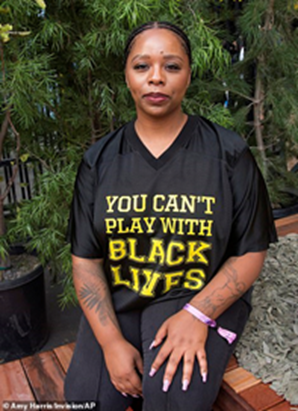 CRT has in effect, captured the modern law school across nearly all its dimensions including teaching methods (one not dare over-use the “Professor Kingsfield” Socratic methods of student probity which are now thought a tool of White oppression, bias, exclusion, discrimination and therefore harm). It also affects course and text design, faculty hiring and student recruiting (the law school’s nearest academic cousin, the school of public policy, is in many ways even more corrupted). CRT is an ideology so extreme that it blinds its adherents to actual law. In one of its great ironies, it finds the U.S. Constitution itself fundamentally deficient. Yet most activist law professors, who otherwise assert a “living” mandate in how the Constitution is interpreted, have no sense of what an actual living Constitution means: it is one that circumscribes government, so that men and women are free to act as self-directed, autonomous citizens enjoying and asserting their own free will. The radicalized Left, of which CRT is a part, seeks instead, an inert and idled Constitution. Our original founding charter is a danger to their plans. CRT might as well stand for “Constitutional Rights Terminated.” And that includes the rights, liberty and freedoms of association of their target constituents. In this regard, CRT, in all its forms of legal and technical enframement (from the German “Gestell,” or the built system of thought channeling human actions) is the modern manifestation and reassertion of a new Antebellum Paternalism, and with it a new slave class, a new slave owner, with a ubiquitous digital slave collar.
CRT has in effect, captured the modern law school across nearly all its dimensions including teaching methods (one not dare over-use the “Professor Kingsfield” Socratic methods of student probity which are now thought a tool of White oppression, bias, exclusion, discrimination and therefore harm). It also affects course and text design, faculty hiring and student recruiting (the law school’s nearest academic cousin, the school of public policy, is in many ways even more corrupted). CRT is an ideology so extreme that it blinds its adherents to actual law. In one of its great ironies, it finds the U.S. Constitution itself fundamentally deficient. Yet most activist law professors, who otherwise assert a “living” mandate in how the Constitution is interpreted, have no sense of what an actual living Constitution means: it is one that circumscribes government, so that men and women are free to act as self-directed, autonomous citizens enjoying and asserting their own free will. The radicalized Left, of which CRT is a part, seeks instead, an inert and idled Constitution. Our original founding charter is a danger to their plans. CRT might as well stand for “Constitutional Rights Terminated.” And that includes the rights, liberty and freedoms of association of their target constituents. In this regard, CRT, in all its forms of legal and technical enframement (from the German “Gestell,” or the built system of thought channeling human actions) is the modern manifestation and reassertion of a new Antebellum Paternalism, and with it a new slave class, a new slave owner, with a ubiquitous digital slave collar.
The modern law school provides the laboratory for mixing CRT as social justice, with biosecurity as authoritarian law, combining racial division with racial opportunism into a permanent state of social tension and social control.
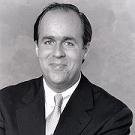 Matt Andersson is a science and technology professional and author of the upcoming book “Legally Blind: How Ideology Has Captured the Law School, the Judiciary and the Constitution.” He is a graduate of the University of Chicago and the University of Texas at Austin
Matt Andersson is a science and technology professional and author of the upcoming book “Legally Blind: How Ideology Has Captured the Law School, the Judiciary and the Constitution.” He is a graduate of the University of Chicago and the University of Texas at Austin


